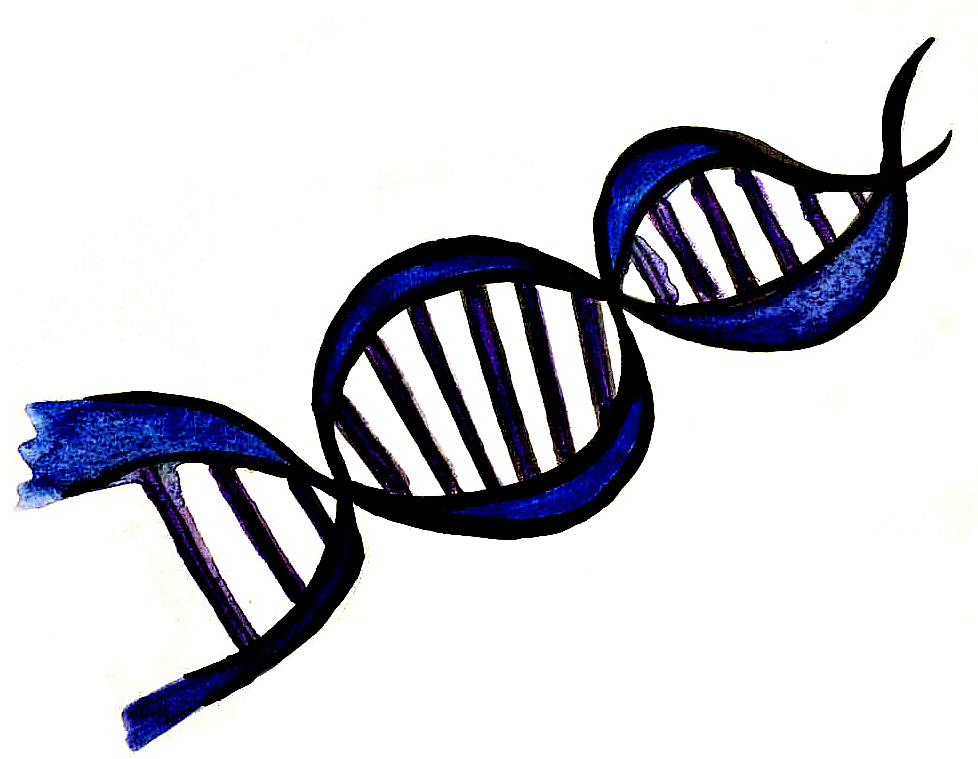DNA molecules contain the crucial hereditary information of an organism. The building blocks of a DNA molecule are called nucleotides. There are four types of nucleotides, which differ by the nitrogenous base (adenine, guanine, cytosine and thymine) present in their structure. These fours bases are like the “alphabet” of DNA. Determining the sequence of the nucleotides in a DNA molecule is like reading a long and meaningful sentence, which requires every single word to be in the correct place. Knowing the sequence of these nitrogenous bases enables scientists to obtain the ‘recipe’ of certain proteins, detect abnormalities possibly leading to genetic disorders, and, when used by forensic scientists, help identify individuals from biological material they left behind.
Over the past forty years, DNA sequencing technologies have been advancing rapidly. It all started in the 1970s, when British biochemist Frederick Sanger first developed a technique to sequence DNA. This method used radioactive markers to indicate the type of each nucleotide. With the aid of polyacrylamide gel and X-ray, scientists were able to visualize the sequence of the nucleotides in DNA, giving them the very first look at this very important molecule.
This October, Catherine Offord a writer for The Scientist spoke to various researchers on the development of DNA sequencers.
“It was all very manual,” recalled Richard Wilson, at the McDonnell Genome Institute at Washington University in St. Louis. “We used to get the sequencing gels running, go have dinner and probably a few beers. Then we’d come back to the lab around two in the morning, take the gels down, put X-ray film on them, and develop them the next day.” Richard noted that after the gels were developed, his team would gather in the laboratory: some people would read the gel aloud, some people would type the sequence into a computer.
The Sanger method was widely adopted, and carried out manually around the world for a decade. Things were soon about to change. Sequencing instruments that were much faster and cheaper would soon be developed.
“It was clear to us that automating DNA sequencing was really going to be key to the future of biology,” said Leroy Hood, who co-founded Applied Biosystems Inc. (ABI) in 1981 to develop some of the sequencing machines that would drive this revolution. “Molecular biology was coming to the fore, and it was clearly central to understanding biological information in living organisms[…] Sequencing was going to become very, very important.”
“It was clear to us that automating DNA sequencing was really going to be key to the future of biology.”
ABI announced its first automated DNA sequencing instrument in 1986. Although it was based on the Sanger method, coloured, fluorescent labels were used to replace the radioactive labels. Instead of running the DNA through four different lanes, they ran them through only one lane because each nucleotide could be distinguished by its colour. A laser detector was used to determine the sequence, in place of the X-ray film. Though this technique was not cheap, costing between two to five dollars per sequenced nucleotide, sequencing became more practical and required less manual labour. Scientists not only were able to sequence a segment of DNA, but also the entire genome of a multicellular animal, such as Caenorhabditis elegans, a type of roundworm.
“We thought it would be transformative,” noted Kim Worely, a geneticist at Baylor College of Medicine, who was involved in the Human Genome Project. “Every lab around the world was spending lots of time analyzing one part of one gene. Giving people all the genes, all at once, so they could just do the biology would be a tremendous benefit.” As a result of the Human Genome Project, an international team of researchers were able to sequence the entire human genome by using this technique after spending ten years and three billion dollars.
The next wave of sequencing instruments that soon followed involved massive parallelization. Leroy Hood, described them as being able to produce “millions of different sequences simultaneously, but with very short reads.” The first commercially successful machines using parallelization was released by biotech company 454 Life Sciences in 2005. With a cost of less than one-sixth that of the conventional methods, these newly developed machines could sequence 25 million bases with 99 per cent accuracy in a four-hour run.
As a result of the Human Genome Project, an international team of researchers were able to sequence the entire human genome.
The following year, biotechology company Illumina bought Solexa, the most widely used sequencing machine today. Solexa was a cheap and effective sequencer for research and clinical labs. In 2014, Illumina released the HiSeq X Ten system, and reduced the cost of sequencing a human genome to less than a thousand dollars.
The latest research on DNA sequencing instruments focuses on using the motion of electrons to identify nucleotides. Researchers from the National Institute of Standards and Technology have proposed a design for the nanoscale electronic motion sensor, which can detect motions as tiny as those of an atom. This device is predicted to sequence at a speed of 70 million base pairs per second.
Leroy Hood, reflected back on the last thirty years of DNA sequencing, “Living through it, you were very impatient, and always wondered when we’d be able to move to the next stage (…) But in looking back, all of the things that have happened since ’85, they’re really pretty astounding.”

